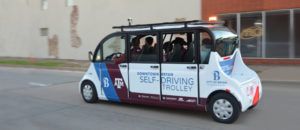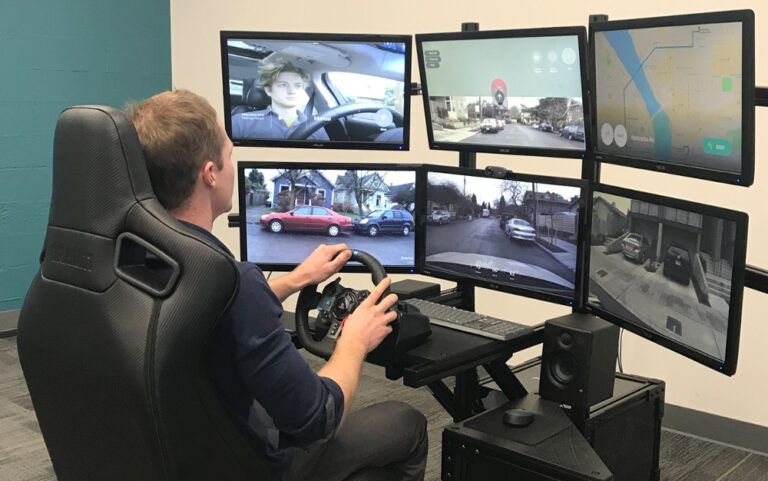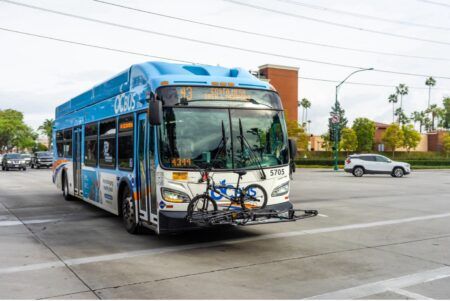In the first commercial deployment on public roads for a teleoperation system, the Texas A&M University is adding Designated Driver’s remote-control technology to its autonomous shuttle fleet.
In the first phase of the deployment, Designated Driver’s Remote Assistance will be integrated into the Texas A&M shuttle autonomy system to authorize the shuttle to proceed at four-way intersections and stops. The DD system will remotely provide guidance and way points to the A&M shuttles operating in the downtown district in Bryan, Texas. Over time, additional Designated Driver functionality will be added, including the ability to provide the shuttle’s autonomy system with alternative routes, when needed, enabling it to safely navigate around unanticipated obstacles.
Enabling remote control of vehicles in the event of obstructions, challenging road conditions and sensor malfunction or where operation is difficult or hazardous, Designated Driver uniquely offers both remote-driving and remote-assistance models for teleoperation. With remote driving, the teleoperator fully takes charge of the car, using the cameras and sensors in the vehicle to maneuver it. However, in most real-world scenarios, the autonomy system is fully functional but simply unable to determine the safest path forward. In these situations, such as at the stops and intersections encountered by the Texas A&M autonomy system, DD provides remote-assistance technology.
Based in Portland, Oregon, Designated Driver’s ‘human-in-the-loop’ technology will provide ‘virtual safety’ for Texas A&M’s shuttle fleet that was originally piloted on the campus in October 2018. By adding the option for real-time, human-operated control of autonomous vehicles, DD’s technology bridges the gap in self-driving vehicle development, with the system able to perform as a standalone white-labelled remote vehicle control unit, or be completely integrated with existing on-board high-resolution cameras, sensors and control units, and can optionally integrate with fleet management technology. While DD’s technology will eventually replace Texas A&M’s safety driver, the shuttles will continue to include a safety navigator who will provide support and educate the passengers on the technology. The shuttles will be controlled and monitored by a dedicated teleoperations center at the university.
“The Designated Driver system provides a powerful ‘safety net’ for our driverless shuttles,” said Dr Srikanth Saripalli, an associate professor in Texas A&M’s Department of Mechanical Engineering, who has overseen the shuttle project since its inception last year. “Among our most important observations over the past six months, we found that four-way intersections and stops were the most common scenarios where our safety driver had to intervene. Designated Driver’s technology provides both remote driving and remote assistance; ideal for easily and safely guiding a vehicle through an intersection.”
Designated Driver’s CEO, Manuela Papadopol, said, “We are enabling Texas A&M to get the safety driver out of the driver’s seat by deploying a reliable teleoperation solution. This model lowers the barrier to entry for any company to provide safe autonomous solutions. We’re excited to help Texas A&M continue to expand its autonomous shuttle program in other vehicles and cities and look forward to using this opportunity to further study the behavior of teleoperators and provide the best user experience for all riders.”





